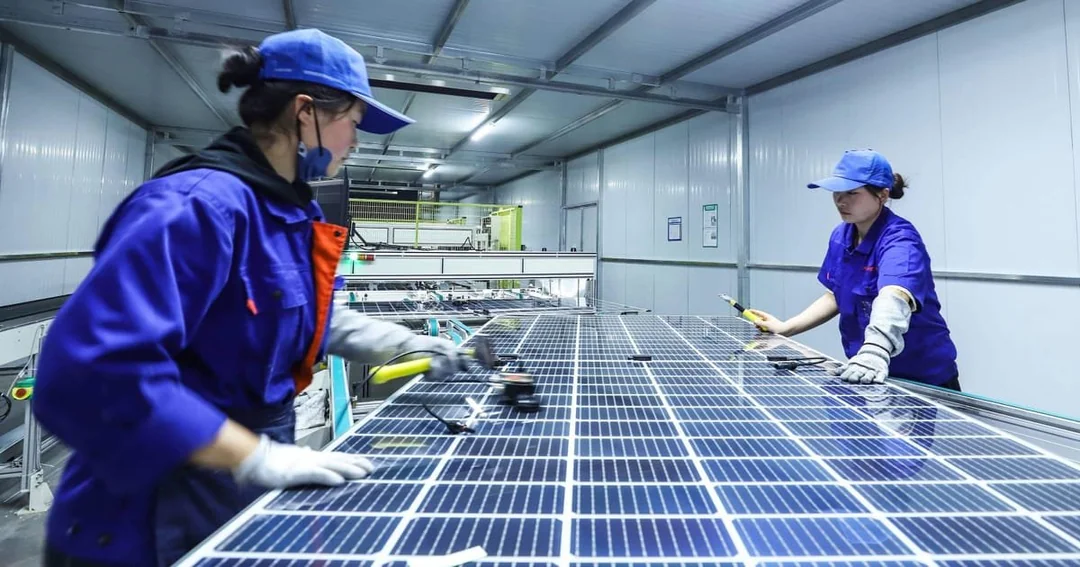Gujarat has long been one of India’s leading states in renewable energy, especially solar power. With abundant sunlight, large open spaces (especially in districts like Kutch, Banaskantha, Patan, etc.), and strong industrial growth, Gujarat is well-positioned to lead India’s solar transition. Its solar policy framework has evolved to encourage rooftop installations, utility-scale solar parks, net metering, and incentives for various categories of consumers. The policy aims not only to increase clean energy capacity but also to reduce power costs, improve energy security, and boost local manufacturing and employment.
Key Features & Incentives in Gujarat’s Solar Policy:
Rooftop Solar & Residential Incentives:
• Under the PM Surya Ghar Muft Bijli Yojana, eligible households in Gujarat get free electricity up to 300 units/month with rooftop solar systems. There are also subsidies for installing such systems — up to ₹78,000 for systems of capacity 3 kW or more.
• Subsidy tiers are structured: for up to 2 kW, a certain subsidy per kW applies; for additional capacity and above 3 kW, fixed subsidy caps apply.
Net Metering & System Capacity Flexibility:
• Gujarat’s regulations allow rooftop solar systems from 1 kW up to 1 MW to use net-metering. For certain larger systems (e.g., above 10 kW up to 1 MW), gross metering may be permitted. This allows consumers to feed excess solar power into the grid and be compensated.
• The old limits on rooftop solar capacity tied to sanctioned load or contracted demand have been removed or relaxed. In many cases, there is no strict cap on how much solar one can install relative to the existing load.
Government Buildings & Institutional Solarization:
• The state has committed to installing rooftop solar on government buildings. For FY 2024-25, Gujarat set a target of 48 MW of solar rooftop capacity on government buildings, backed by a budget allocation (≈ ₹177.4 crore).
• As of March 2024, thousands of systems were already installed — over 3,000 rooftop systems with a combined capacity of ~56.8 MW across state government buildings.
Utility-Scale Solar Projects and Solar Parks:
• Gujarat continues to promote large solar parks and utility-scale solar generation. The state has seen sharp growth in solar power generation. In FY 2024-25, solar generation increased by ~50% over the previous year.
• GERC (Gujarat Electricity Regulatory Commission) recently approved tariffs for 1,000 MW of solar projects (500 MW base + 500 MW optional). The weighted average tariff approved was about ₹2.55-2.555/kWh.
Renewable Energy Targets & Achievements:
• As of April 2025, Gujarat had reached ~35.16 GW of renewable energy (RE) capacity, with solar forming a large part of that.
• Gujarat is also first in the country in installed rooftop solar capacity (≈ 5.31 GW) among states.
• The state has been adding large amounts of RE, especially solar: for example, 6,616 MW solar capacity added in a recent period (Jan-Sept 2025) as part of its renewable energy expansion.
Benefits for Stakeholders:
• Homeowners / Residents enjoy lower electricity bills, subsidies, net-metering, and sometimes even free electricity for eligible systems.
• Businesses / Industries get flexibility for captive solar, favorable tariffs, the ability to generate solar onsite without restrictive caps, and incentives via policy frameworks.
• Government / Public Sector gains by reducing power subsidies, lowering carbon emissions, meeting renewable targets, and demonstrating leadership.
• Environment & Society benefit from cleaner air, fewer fossil fuel imports, and jobs in solar installation, manufacturing, maintenance, etc.
Challenges & Things to Watch:
• Grid integration and Stability: As more rooftop and solar park capacity comes online, the state will need to ensure the grid can handle variable power, storage solutions, and peak demand.
• Tariff pressures: Maintaining attractive tariffs for solar projects while ensuring utilities and DISCOMs are financially viable is challenging.
• Administrative Delays: Approvals, land acquisition (for large parks), vendor empanelment, and other procedural steps can delay installations.
• Capacity Banking / Load Sanction Issues: Changes or caps in banking or allowed capacities could disrupt plans, especially for industrial users who plan large captive solar plants.
• Awareness & Access: Many rural or economically weaker households may not have awareness, or roof space, or financing to leverage solar subsidies fully.
Conclusion:
Gujarat’s solar policy is among the most progressive in India. By combining subsidies, regulatory flexibility, net metering, and institutional solarization, the state is making solar more accessible for households, industries, and the government. Though there are hurdles (grid issues, capacity limits, bureaucratic challenges), the accomplishments so far are impressive. For anyone in Gujarat (homeowner, business, developer), the solar policy environment is favorable.




